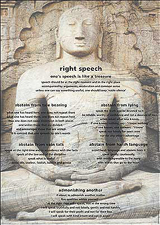Integral Health
The metaphysical basis for Integral Health — the inner poise
In the realm of ‘Matter’, there is usually unanimity of scientific opinion about the general laws of physical sciences (scientists behave as if there is a ‘monism’ in matter itself). However, regarding the ‘Spirit’, there are very different opinions based on different experiences and realisations of different spiritual seekers. Spiritual seekers are not necessarily united in their understanding of spirituality and have not bothered to evolve ‘universal laws’ of spirituality while scientists at least share a modicum of commonality regarding scientific concepts.
It is therefore not surprising that there have been great spiritual stalwarts who have described the ‘Brahman’ or ‘Reality’ as a silent self, inactive, pure, self-existent, self-enjoying and detached from manifestation. There have also been equally great spiritual stalwarts who have understood ‘Reality’ or ‘Brahman’ as active, free, powerful and meaningful in the manifestation.
Sri Aurobindo explains that the ‘passive’ and ‘active’ Brahmans are two poises of the same Reality and each is necessary to the other. The passivity or silence supports the activity or dynamism. He writes:
“Here also harmony and not irreconcilable opposition must be the illuminative truth. The silent and the active Brahman are not different, opposite and irreconcilable entities, the one denying, the other affirming a cosmic illusion; they are one Brahman in two aspects, positive and negative, and each is necessary to the other. It is out of this Silence that the Word which creates the worlds forever proceeds; for the Word expresses that which is self-hidden in the Silence. It is an eternal passivity which makes possible the perfect freedom and omnipotence of an eternal divine activity in innumerable cosmic systems. For the becomings of that activity derive their energies and their illimitable potency of variation and harmony from the impartial support of the immutable Being, its consent to this infinite fecundity of its own dynamic Nature (1).”
Application in life: the inner poise
The relation between the ‘silent’ and ‘active’ Brahman or that between ‘silence’ and ‘dynamism’ is something that needs to be established in the individual human schemata for a harmonious, integrated and healthy life. There is a wrong notion that ‘dynamism’ alone is an expression of power, activity and action. Yogic psychology describes dynamism as only one aspect of power. Power can also be represented along a static dimension. Moreover, it is this static power that supports and upholds the dynamic power of outer action. The perfect man can combine in himself the silence and the activity. It has been surmised that many of our physical and psychological maladies stem from an excessive dynamism without a base of static power. In fact, the Type-A behaviour is a unique example where middle-aged and successful executives with great drive, responsibility, heightened sense of time-urgency and dynamism are more prone to coronary heart disease. The interesting point is that the classical Type-A personality is marked by an intense psychological restlessness and inability to relax. In other words, the explicit dynamism that characterises Type-A behaviour is not complemented and balanced by an intrinsically static poise in character and action. Thus the base of static power has to be established and consolidated in our consciousness to support the flow of dynamism in an integrated and healthy life.
The cultivation of an inner poise is thus a necessary aspect of personality development: this inner poise permits the balance between ‘silence’ and ‘dynamism’. The inner poise needs to be established at different levels of consciousness and these different experiences can be subsequently integrated around a Beyond-Ego principle. In fact, such an endeavour can be initiated in child development and educational programmes as part of personality growth and development.
Sri Aurobindo explains:
“Man, too, becomes perfect only when he has found within himself that absolute calm and passivity of the Brahman and supports by it with the same divine tolerance and the same divine bliss a free and inexhaustible activity. Those who have thus possessed the Calm within can perceive always welling out from its silence the perennial supply of the energies that work in the universe.… The Silence does not reject the world; it sustains it. Or rather it supports with an equal impartiality the activity and the withdrawal from the activity and approves also the reconciliation by which the soul remains free and still even while it lends itself to all action (2).”
Conclusion
Thus, the cultivation of ‘silence’ and ‘dynamism’ in a single individual shifts the focus of psychology to a ‘self-growth’ discipline and accords with the index of Integral Health. The disparity between the poise of silence within and dynamic power and activity on the surface is the cause of many psychosomatic maladies. One who has achieved silence, peace and quietude within can afford to support the dynamic play of power, energy and action on the surface. A vigorously dynamic individual will have less chance of disharmony and illness if he is balanced and stabilised by a poise of silence within.
References
1. Sri Aurobindo. SABCL, Volume 18. Pondicherry; Sri Aurobindo Ashram Trust, 1970, pp. 26-7.
2. Ibid. p. 27
Share with us (Comments, contributions, opinions)
When reproducing this feature, please credit NAMAH, and give the byline. Please send us cuttings.


